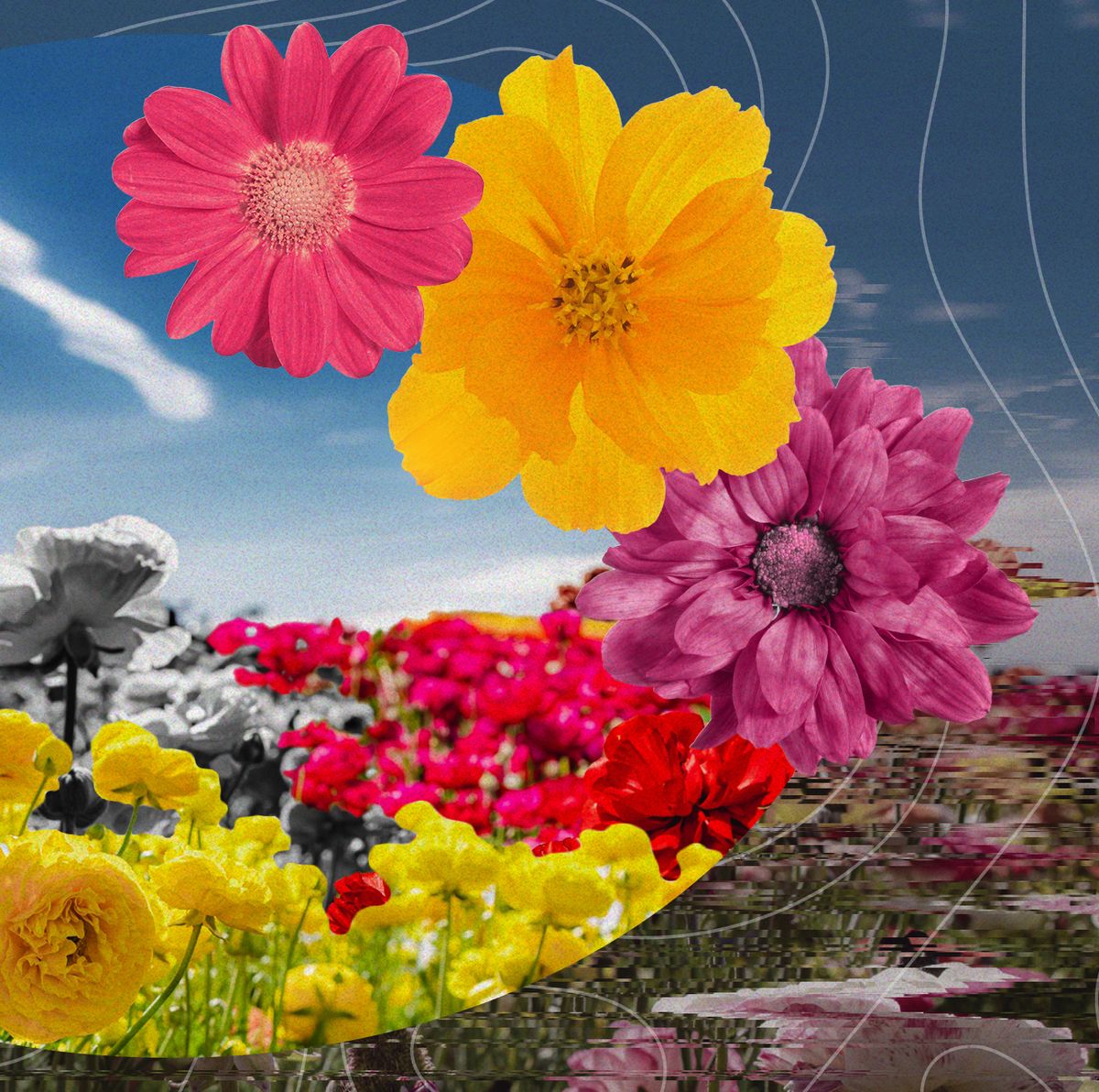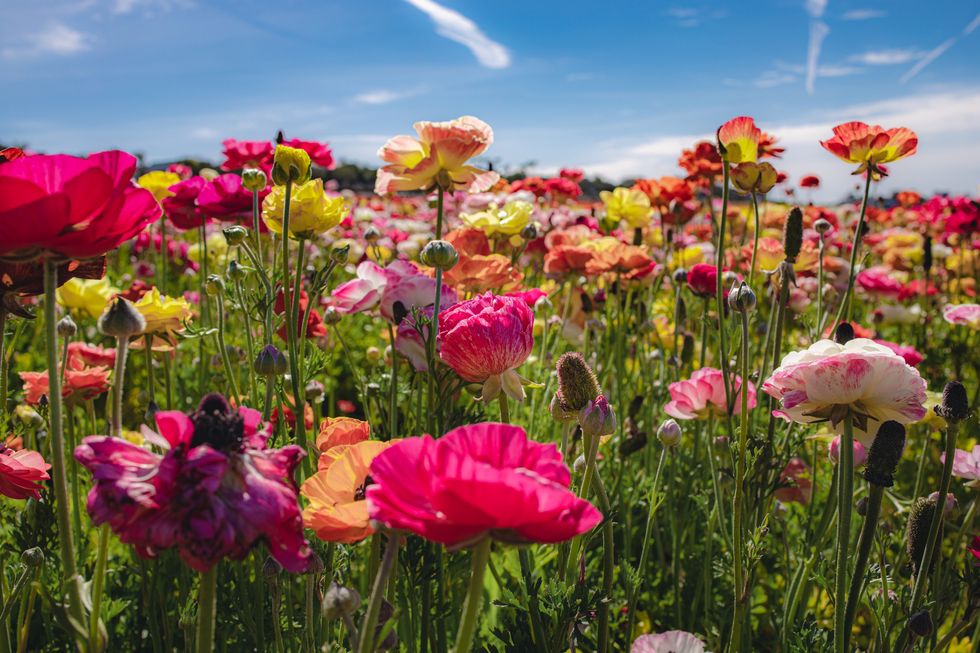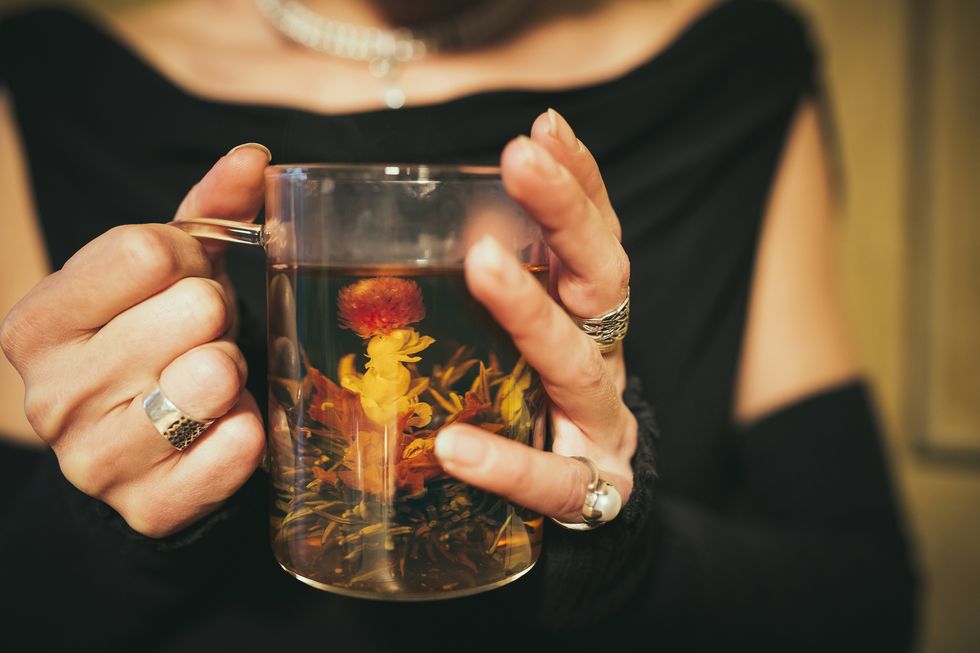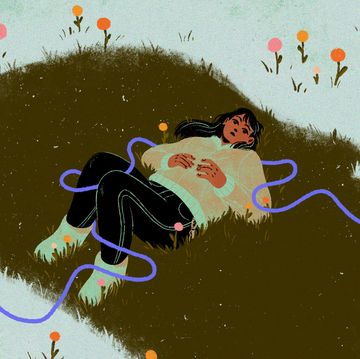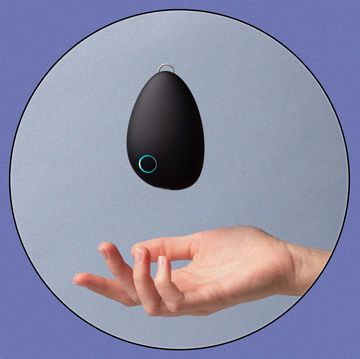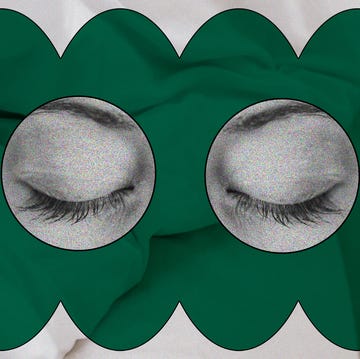In the Shondaland series The Novelty of Nature, we’re digging into the power of natural places and the wellness benefits of embracing the elements. From camping tips and safari stories to eye-opening tales about the environment to inspiring ways to reclaim your relationship with nature, these stories show it’s never been a better time to get lost in the great outdoors.
With this year’s record-breaking rainfall across the United States, long-dormant wildflower seeds have sprung to life in many parts of the country, blanketing the terrain with orange, yellow, pink, purple, and white blossoms. The blooming abundance isn’t simply beautiful. It’s also good for us.
Multiple studies show that proximity to plants has profound health benefits for human beings. We all know that a bouquet of flowers can convey appreciation, but research finds that simply being around flowers also reduces stress, speeds healing, enhances concentration, and improves mood.
“Flowers lower stress levels and anxiety in people,” says Christine Capra, program manager at the Horticultural Therapy Institute in Denver. “Even stress levels related to depression are decreased by having flowers, whether it’s in your outdoor garden or in your home or going to visit a botanic garden.”
According to a 2005 study by professors from Rutgers and La Salle universities, flowers have “immediate and long-term effects on emotional reactions, mood, social behaviors, and even memory for both males and females.” Another study found that people recovering from surgery who have plants or flowers in their hospital room have better health outcomes and report lower feelings of pain, anxiety, and fatigue.
Surrounding ourselves with flowers, whether while visiting a botanical garden or witnessing a wildflower superbloom in person, may be as beneficial as “forest bathing,” a Japanese tradition of observing nature and breathing deeply that can lower stress hormones, heart rate, and blood pressure as well as soothe the nervous system.
“In Japan, they do forest bathing. This is a flower shower,” says Fred Clarke, general manager of The Flower Fields at Carlsbad Ranch, a 55-acre ranunculus flower farm in Carlsbad, California, which hosts educational programs, events, and yoga classes amongst the blooms. “You can’t help but smile and feel better when you’re here,” he adds. “When you walk through that door, the weight is lifted off your shoulders.”
While being outside in nature can be healing, you don’t have to make a special trip to reap the benefits. Bringing a bouquet into your home or workplace — even simply looking at images of flowers — helps reduce stress and increase peace of mind.
Planting and tending to flowers in your yard, at a community garden, or on your kitchen counter can elevate those powerful benefits, says Capra, and forms the basis of horticultural therapy, the practice of using plant cultivation and gardening to improve mental and physical health. “There are lots of ways to use horticultural therapy,” she says. “But it’s important to know that it’s the actual act of gardening. It’s not passive. It’s not just looking at flowers. It’s getting your hands in the dirt and growing the flower.”
For Oakland, California-based gardener and horticultural liaison Sigrid Hubbell, who connects people and plants through her company Bouquet Improv, growing flowers is an experience of hope and fulfillment, which brings her closer to the rhythm of the seasons and Earth. Hubbell loves watching the transformation from seed to bud to flower. “Sometimes I’ll go out in the morning,” she says, “and things will have bloomed overnight. It’s literally this pure delight.”
Whether you’ve got a green thumb or not, here are some ways to tap into flower power this season.
Get your hands dirty
Planting flowers doesn’t have to be hard, doesn’t require a yard, and is incredibly healing, notes Capra, who has taught horticultural skills in schools, prisons, and nursing homes.
Visit a local garden center or greenhouse — itself a relaxing experience, Capra points out — and look for your favorite colors. (If you’re not sure what color to choose, participants in one study found yellow blooms to be the most relaxing.) Choose flowering plants already in bloom. Then, pick up some pretty pots and potting soil.
Fill the new pots with soil, gently extract the flowering plants from their plastic containers, and nestle the roots into the pot. Add a little more soil — and voilà. “It’s really that easy,” Capra says, “and they last all summer long, especially if they’re annuals.”
Gardening offers big health benefits, including reduced stress, depression, and anxiety and improved mood and increased cognitive function. “The act of gardening itself,” Capra says, “is hopeful.”
Keep flowers around
Place newly planted flowers — or a single bloom or two in a vase — where you’ll see them often for a powerful mood boost. College students and office workers performed better and reported stronger well-being when working in rooms with plants and flowers.
Many studies have demonstrated the profound healing effects nature has on human beings. But because modern humans spend most of our lives indoors, we need to bring natural elements inside. A bright Gerbera daisy or sunflower is an easy way to do it.
You can also amp up your creativity by buying a big bouquet of fresh flowers, then splitting it up and placing it around different parts of your home or office.
Hubbell recently hosted a make-your-own-bouquet event in which guests could choose from an array of flowers and greenery to assemble their own arrangements. It was a resounding success. “The reason they found it relaxing is because they weren’t distracted,” she says. “They weren’t thinking about what they had to do later. They were just there in the moment with the plants, observing and arranging them.”
Use all your senses
During sunny seasons, you may not even need to make a special trip to get your flower fix. Are the neighbors’ roses blooming? Are the sunflowers in the park turning their faces toward the sun? Can you see (or smell) a fruiting lemon tree in a nearby yard? “If you just look around,” Hubbell says, “you can probably spot flowers right in your own neighborhood.”
If there are no plants nearby, enjoy flowers’ fragrant benefits through aromatherapy with essential oils. A whiff of lavender oil, which is made from lavender flowers and smells like a spa, can ease anxiety and improve sleep. Other calming floral essential oils include ylang-ylang, chamomile, rose, and geranium.
You can also taste flowers. Floral teas, for example, are packed with antioxidants, vitamins, and minerals. Or consider dressing up dishes with rose, violet, marigold, chrysanthemum, jasmine, gardenia, or hibiscus blooms. Be sure to select petals grown without pesticides. No matter how much flower power you integrate into your life, you’ll begin feeling the effects right away.
Sandy Cohen is a Southern California-based health and wellness coach, host of the Inner Peace to Go podcast, and writer of the monthly Shondaland series A Path to Well-Being. Follow her on Instagram @YouKnowSandy.
Get Shondaland directly in your inbox: SUBSCRIBE TODAY
